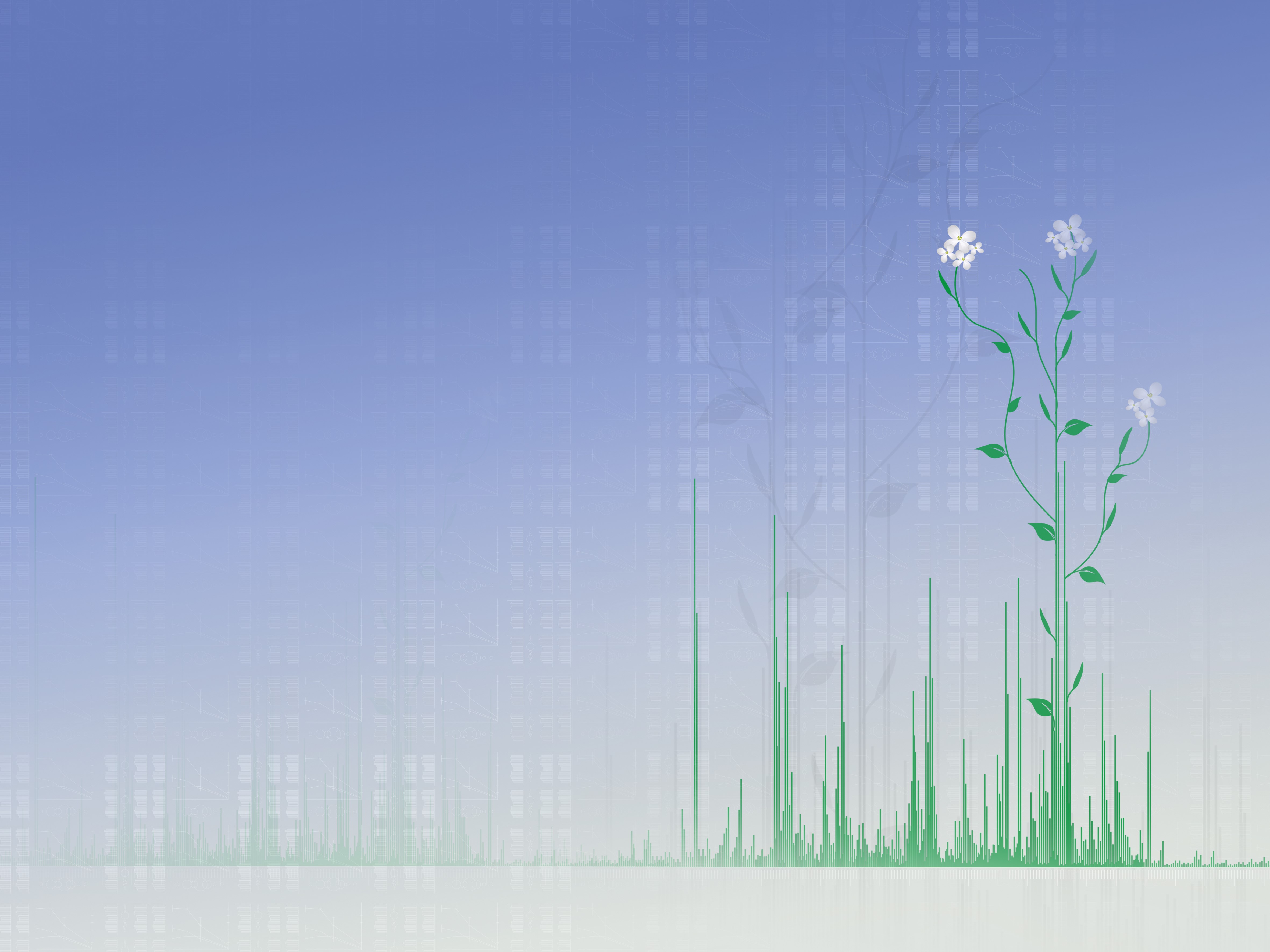Creating a molecular map
for the plant sciences
Plants are essential for life on earth. They provide food for virtually all organisms and oxygen for breathing, and they regulate the climate of the planet. Proteins play a key role in controlling all aspects of life including plants. Under the leadership of the Technical University of Munich, or TUM, our team of scientists has now mapped about 18,000 of the proteins found in the model plant Arabidopsis thaliana.

Every cell of any organism contains the complete genetic information, or the blueprint, of a living being, encoded in the sequence of the so-called nucleotide building blocks of DNA. But how does a plant create tissues as diverse as a leaf that converts light into chemical energy and produces oxygen, or a root that absorbs nutrients from the soil?
The answer lies in the protein pattern of the cells of the respective tissue. Proteins are the main molecular players in every cell. They are biocatalysts, transmit signals inside and between cells, form the structure of a cell and much more.
To form the protein pattern, it is not only important which proteins are present in a tissue but, more importantly, in what quantities. For example, proteins of the photosynthesis machinery are found primarily in leaves but also in seeds, yet at a thousand times lower levels.
Laboratory plants as a model for basic research
Our team, led by postdoc Julia Mergner, examined the model plant Arabidopsis thaliana, or thale cress, using biochemical and analytical high-throughput methods to find out more about its molecular composition.
For 40 years, this rather inconspicuous weed with small white flowers has been the laboratory mouse of plant biology. It is small, generally undemanding and easy to grow. These properties have paved the way for its frequent use in genetics and molecular biology. Insights from basic research on Arabidopsis can often be transferred to crop plants, making it interesting for plant-breeding research.
Most of the data were generated using a method called liquid chromatography–tandem mass spectrometry, which enables the analysis of thousands of proteins in parallel in one experiment; bioinformatics methods helped analyze the huge amounts of data. The research was published in the journal Nature.
An atlas for the global scientific community
For the first time, we have comprehensively mapped the proteome, that is, all proteins from the tissues of the model plant Arabidopsis. This allows new insights into the complex biology of plants.
All results of the research are summarized in a virtual atlas, which provides initial answers to the questions:
- How many of the approximately 27,000 genes exist in the plant as proteins (> 18,000)?
- Where are they located within the organism (e.g., flower, leaf or stem)?
- In what approximate quantities do they occur?
All data is freely available in the online database ProteomicsDB, which already contains a protein catalog for the human proteome, which our team at TUM decoded in 2014.
One can anticipate similarities between Arabidopsis and the molecular maps of other plants. The atlas should, therefore, also inspire research on other plants.
In the future, we will turn our attention to the analysis of crops. Of particular interest will be investigating how the proteome changes when plants are attacked by pests or how plants can adapt to climate change.
Enjoy reading ASBMB Today?
Become a member to receive the print edition four times a year and the digital edition monthly.
Learn moreGet the latest from ASBMB Today
Enter your email address, and we’ll send you a weekly email with recent articles, interviews and more.
Latest in Science
Science highlights or most popular articles

Bacteriophage protein could make queso fresco safer
Researchers characterized the structure and function of PlyP100, a bacteriophage protein that shows promise as a food-safe antimicrobial for preventing Listeria monocytogenes growth in fresh cheeses.

Building the blueprint to block HIV
Wesley Sundquist will present his work on the HIV capsid and revolutionary drug, Lenacapavir, at the ASBMB Annual Meeting, March 7–10, in Maryland.

Gut microbes hijack cancer pathway in high-fat diets
Researchers at the Feinstein Institutes for Medical Research found that a high-fat diet increases ammonia-producing bacteria in the gut microbiome of mice, which in turn disrupts TGF-β signaling and promotes colorectal cancer.

Mapping fentanyl’s cellular footprint
Using a new imaging method, researchers at State University of New York at Buffalo traced fentanyl’s effects inside brain immune cells, revealing how the drug alters lipid droplets, pointing to new paths for addiction diagnostics.

Designing life’s building blocks with AI
Tanja Kortemme, a professor at the University of California, San Francisco, will discuss her research using computational biology to engineer proteins at the 2026 ASBMB Annual Meeting.

Cholesterol as a novel biomarker for Fragile X syndrome
Researchers in Quebec identified lower levels of a brain cholesterol metabolite, 24-hydroxycholesterol, in patients with fragile X syndrome, a finding that could provide a simple blood-based biomarker for understanding and managing the condition.

